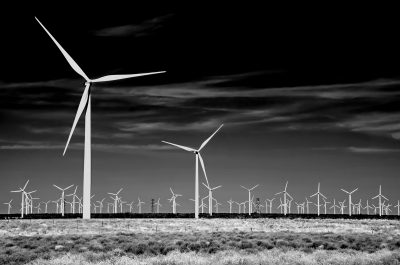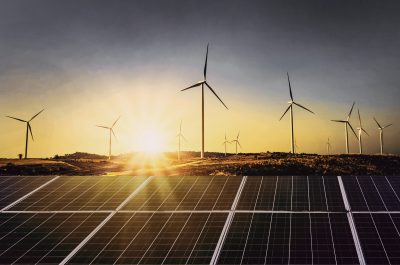Shades of hydrogen – what’s in a colour?
Conferences have been cancelled in 2020, but the 2nd Annual Hydrogen Forum shifted to the virtual world on 15 and 16 September 2020. This forum provided updates on hydrogen projects and a pivotal platform to exchange information.
One session that was of particular interest considered whether the market should move directly to green hydrogen or whether the journey to decarbonising gas could accommodate a role for brown, grey and blue hydrogen.
So, what are these different hydrogen hues?
- Brown – hydrogen produced by using coal where the emissions are released to the air;
- Grey – hydrogen produced from natural gas where the associated emissions are released to the air;
- Blue – hydrogen produced from natural gas, where the emissions are captured using carbon capture and storage; and
- Green – hydrogen produced from electrolysis powered by renewable electricity.
There are also other colours of hydrogen that are less often used including pink, yellow or turquoise.
As a low carbon option, the debate is narrowed to blue and green hydrogen, especially in Australia as we do not have a nuclear industry (which can also be included as a low carbon option for producing hydrogen in other countries).
Adam Bandt, Federal Member for Melbourne and Leader of the Australian Greens, provided some initial views on blue versus green. Unsurprisingly, he strongly favours green hydrogen. His arguments mainly focus on blue hydrogen costing more than gas, potential asset stranding risk for blue hydrogen and the decreasing cost of renewables favouring green hydrogen.
But the pro and con arguments are more complicated than that.
Moving straight to green hydrogen
| For | Against |
|---|---|
| Green hydrogen seems to be the ultimate end-goal for many providing clean emission free energy that can be used for heat, in transport, industry or exports. It relies on renewable generation and a touted benefit is its capacity to utilise excess generation that would otherwise be curtailed (for example the middle of a sunny, windy day), resulting in lower costs of production. Electricity is the main cost element of green hydrogen and as this is expected to decrease, so is the cost of green hydrogen. The hydrogen produce from electrolysers is very high purity and suitable for use in fuel cells to power vehicles. There is a lot of international support for green hydrogen developments and the scale of plants is growing. | The electricity sector is focussing on decarbonising using renewable generation. Redirecting this renewable generation to produce hydrogen will delay the emission reductions from power generation. Electrolysers are currently at small scale, which is great for demonstration projects but limits the application to large volumes of hydrogen production, especially if it needs to draw on existing renewable energy generation. At large scale, green hydrogen will not be able to access dedicated power and cannot rely on the curtailed electricity. It is currently much more expensive than blue hydrogen, so in turn far more expensive than gas. |
Table 1: Pros vs cons for a direct transition to green hydrogen.
Transitioning using blue hydrogen
| For | Against |
|---|---|
| Blue hydrogen is a combination of two commercial-scaled technologies. The production of hydrogen from gas using steam methane reforming and the capture and storage of the produced carbon dioxide, which is already practiced around the world. Existing hydrogen production processes can be retrofitted with CCS so they can become blue hydrogen facilities. And these facilities can produce hydrogen at large scale to continue to provide hydrogen as feedstock. | Hydrogen from natural gas will always cost more than the gas used to produce it. This is simply a reflection that about 30 per cent% of the energy is wasted when converting from gas to hydrogen and additional costs are expected for CCS. Additional processing may be required to get to high purity for fuel cells, but sufficient for heating applications. It will increase pressure to commence new gas developments. Some CO2 may still be released from the reforming process, requiring additional offsets to achieve net-zero. There is community uncertainty about CCS and large assets may become stranded. Current funding mechanisms (ARENA and CEFC) do not support blue hydrogen. |
Table 2: Pros vs cons for the transition to green hydrogen via a blue hydrogen pathway.
Is blue or green the right question?
Focussing on which type of hydrogen to pursue is missing the point. We need to understand how we get to the end goal of decarbonising energy and what options give us the best pathway to achieving it.
A better question to ask would be:
How do we build demand for clean hydrogen?
The use of hydrogen as an alternative to incumbent energy sources ultimately comes down to building demand. Right now, there is no commercial justification for a more expensive energy source due to the lack of carbon pricing signals. There is, however, an environmental and economic imperative to get moving on decarbonising gas- and there is subsequently a lot of industry focus on and investment in green hydrogen technology.
How do we pick a winner?
The objective shouldn’t be picking a winner between technologies. It should be to build a demand base for hydrogen so that the gas of the future can be green. Different colours of hydrogen may all play a role in getting us there.


